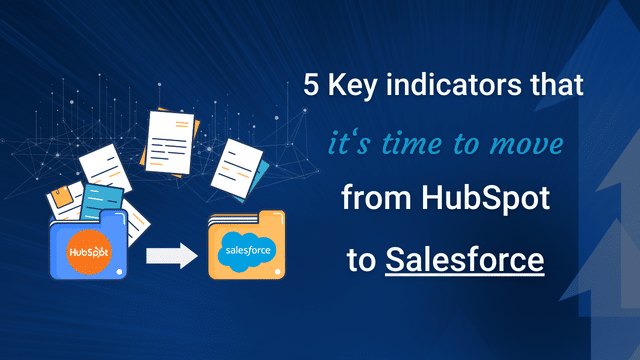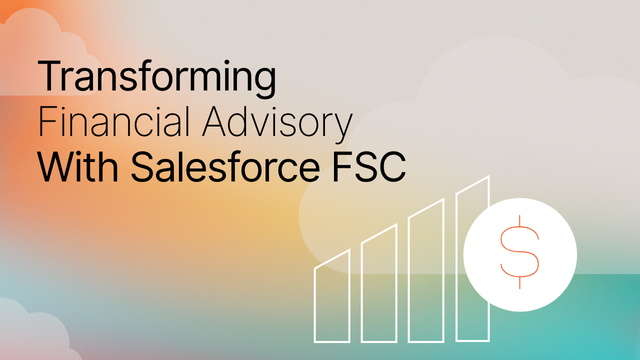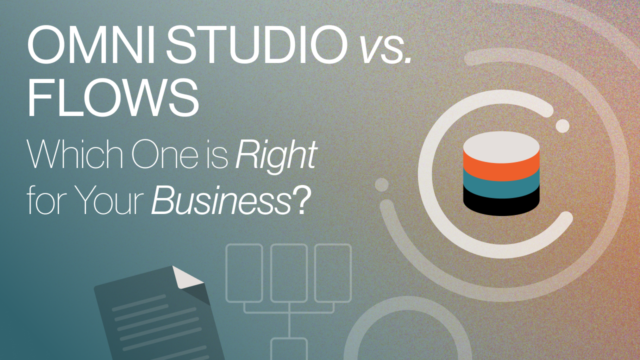When is the right time to move from HubSpot to Salesforce? Or perhaps more importantly – when does it become necessary?
While HubSpot will meet the needs of some mid-sized organizations, most companies are scaling at a pace that will be funded by Venture Capital, with a B2B enterprise sales motion will outgrow it. The need for features like a multi-axis pricing model, specialized sales team(s) with complex lead routing and territory management, and a business intelligence platform for pipeline review and accurate forecasting are critical in most organizations. And while HubSpot can be an amazing solution for companies with straight forward RevOps requirements, it is limited in its ability to deliver on more complex yet critical areas and that can slow long-term revenue and operational growth.
Here are 5 key indicators that will tell you it’s time to move to Salesforce:
Reporting Capabilities of your Solution
The reporting capabilities with HubSpot are bare bones compared to Salesforce’s native reporting functionality. Not only is the reporting in all editions more robust (even the basic Professional edition), but you also have the ability to add native AI solutions and Business Intelligence platforms like CRM Analytics and Tableau. This allows for even more sophisticated full funnel and pipeline analysis and powerful, near real-time dashboards for essential items including executive pipeline reviews.
Customization
If you’re at a point where you need to customize your instance further, HubSpot does not offer the same deep ability to customize your CRM using code. The adaptations available for your Hubspot CRM are primarily limited to basic automation, page layouts and reporting. In Salesforce, you can customize these using a declarative interface (clicks) AND a development one (code), depending on the requirements. When your needs become more complex as you scale and grow (which is inevitable), Salesforce can easily be adapted and become more extensible to other tools, like your internal systems.
Generally speaking, you can adapt your Sales process to fit what Hubspot can accommodate, you can adapt Salesforce to fit your Sales process.
Pricing Model
HubSpot does not allow for the same complexity in a pricing model as Salesforce. Suppose you’re like most successful SaaS companies. In that case, your pricing model must support increased revenue from existing clients while improving your sales team’s ability to quickly and effectively upsell/cross-sell. With that also comes the need to use complex price books and calculate product and revenue schedules for improved data accuracy and reporting, and this will not be supported natively through HubSpot. When you get into upsell/cross-sell, proration, and other similar complexities these can be managed directly in Salesforce and further extended with a tool like CPQ.
Forecasting and Pipeline Inspection
Salesforce’s Forecasting and Pipeline Inspection tools are invaluable, but are not functionalities available through HubSpot. These tools allow SDRs, BDRs, AEs and Leadership to see a consolidated view of pipeline metrics, opportunities, and weekly changes so that teams are armed with the critical information and know which opportunities should be the focus of their time and energy. The adaptability of these solutions and robustness of Salesforce’s native reporting makes building a sophisticated dashboard a cinch – whether that’s for Executive review, or 1:1 weekly coaching meetings between Sales team members and managers.
There’s an App for That
Salesforce has over 20,000 integrations available on the AppExchange, whereas HubSpot’s ecosystem is about 10% of that. Instead of being able to choose the best solution you need, businesses often have to opt for the one or two options that integrate with HubSpot or rely on a non-native option like Zapier, which is not ideal. Often the integrations that are supported in the Hubspot ecosystem are more focused on an SMB buyer, which can be fine initially, but problematic as you scale.
In essence, using a small and medium-sized business CRM like HubSpot may work for your organization today, but as it grows, your organization will reach a point where the system can no longer achieve what’s required of the business. This in turn can lead to deceleration in revenue growth, decrease in customer satisfaction and retention, and impairment of operational efficiencies.
CloudKettle has and continues to support many migrations from Hubspot to Salesforce. We have a time-tested, repeatable process that ensures that clients get a Salesforce org that is tailored to their needs, but also one that is maintainable, secure and is deployed on-time. As you consider when is the best time to migrate from HubSpot to Salesforce for your business, get in touch with us! We’ll walk you through key considerations for a project like this and answer any questions you may have.



